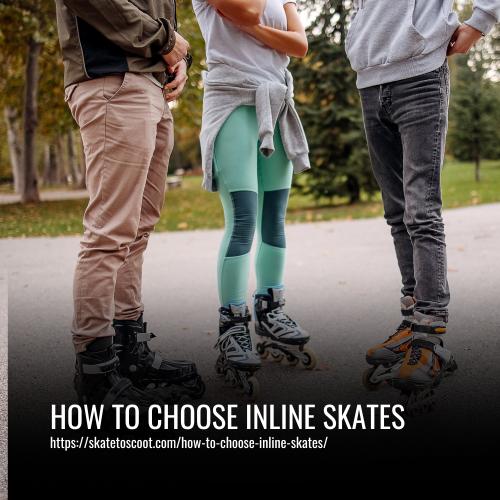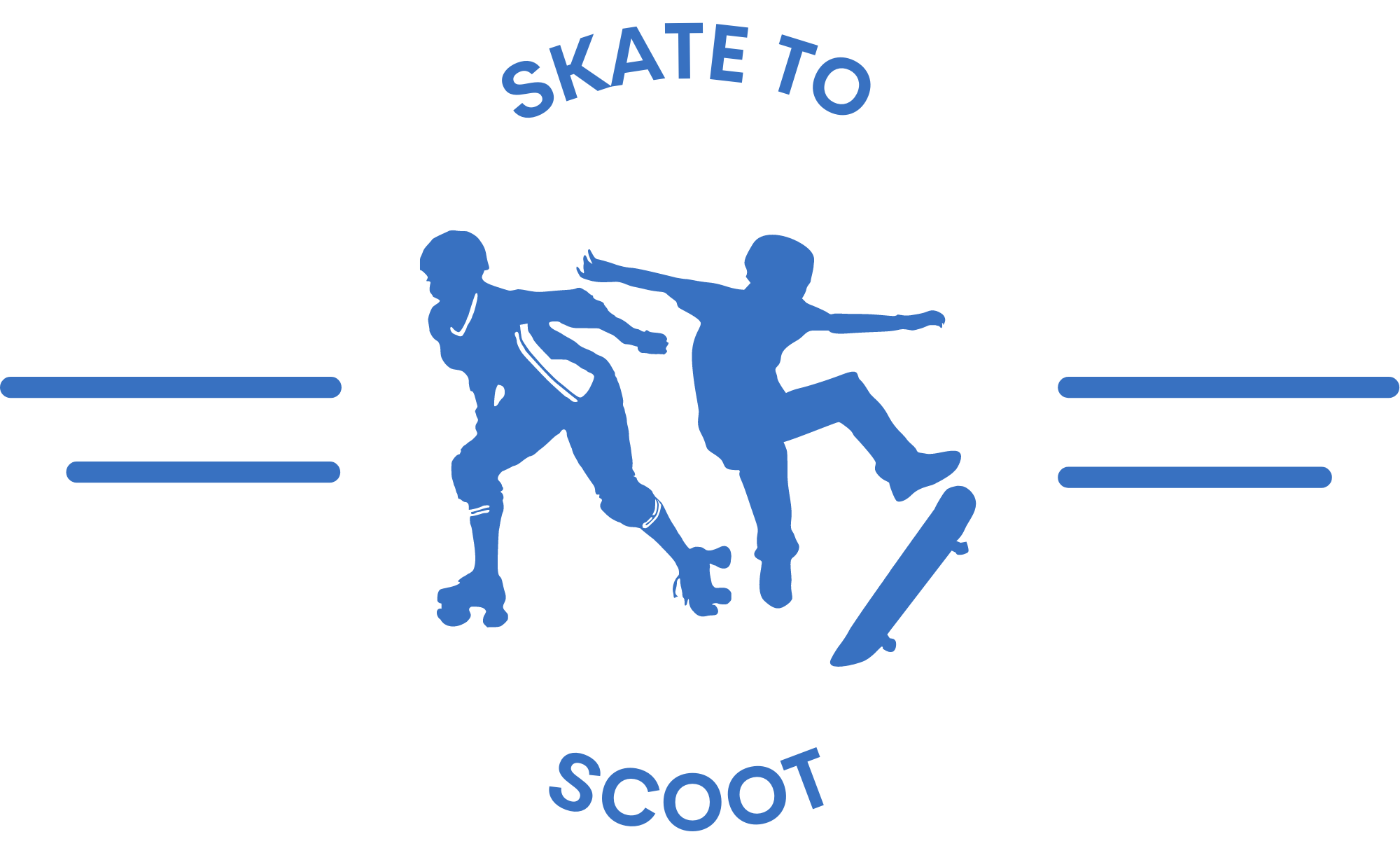How to Choose Inline Skates: A Complete Guide for Beginners
As an Amazon Associate we earn from qualifying purchases.
Mastering the art of inline skating begins with selecting the perfect pair of skates tailored to your skating style, skill level, and individual preferences. Whether you’re a novice seeking comfort and stability or an experienced skater craving speed and agility, the journey to finding the ideal inline skates can be exhilarating yet challenging.
In this comprehensive guide, we’ll navigate through the essential factors to consider when choosing inline skates, empowering you to make an informed decision that suits your skating ambitions and enhances your skating experience.

What Type of Inline Skates to Choose?
When choosing the right inline skates for yourself, it is important to consider your experience level, preferred skating style, and the type of surface you will skate on most often. Here are some options to help you make a decision:
- Fitness Inline Skates: These skates are suitable for fitness and recreational skating. They are easy to control, and have comfortable and well-ventilated shoes, making them widely used among skaters.
- Aggressive Inline Skates: Designed for skaters who enjoy performing tricks, these skates are perfect for street skating, skate parks, and skating over obstacles. They are easy to control, have safety features, and are built to withstand extreme loads during jumps and slides.
- Speed Inline Skates: Performance-focused skates suitable for racing and intensive training. They are designed for frequent use and higher loads. Speed skates often have a prolonged frame, ankle-high shoes, and can hold up to 5 wheels. These are more suitable for experienced skaters and professionals.
- Slalom Inline Skates: Ideal for slalom skating, these skates have smaller wheels placed close together. They are suitable for intermediate and advanced skaters who plan on skating on quality surfaces.
- Children’s Inline Skates: Some children’s skates come with adjustable sizes, ensuring comfort for young skaters. When choosing the frame material, bearings type, and wheel size, consider the probable intensity and style of the child’s skating.
When considering wheel size, bigger wheels are faster and better for uneven surfaces, while smaller wheels are slower and more suitable for smoother, controlled surfaces.
There is also the choice between skates with three or four wheels. Four-wheel skates are more stable and better for beginners and recreational skaters, while three-wheel skates allow for greater speed and aggression, making them suitable for advanced skaters.
Women’s and Men’s Inline Skates: What You Need to Know
When choosing inline skates, it is important to consider whether you need a women’s or men’s skate. Women’s skates tend to have narrower shells and shorter frames, as well as softer padding and laces that are easier to tie.
1. Size/Fit:
- Always refer to the size guide provided on the product pages.
- Choose a size approximately one EU size bigger than your normal shoe size, unless stated otherwise.
- When trying on the skates, wear them for 10-15 minutes indoors (if you plan to return them).
- Make sure you can move your toes comfortably without them touching the nose of the skate.
- If the skates feel tight from the beginning, they will likely cause discomfort during longer runs.
- Keep in mind that boots tend to expand over time, with soft boots expanding more than hard boots.
- People with slim feet often prefer models like K2, while Rollerblade and Powerslide are popular among those with wider feet.
- – Finding the perfect fit may require trying out different skates, just like with regular shoes. Use the specified size guides for guidance.
2. Closure System Buckles and Laces:
- Fitness inline skates usually feature a closure system with both buckles and laces.
- Some models may have a wire tightening system where the skates are tightened by turning a knob.
- Buckles offer a faster and more consistent fit, while laces allow for individualized tightening along the foot.
- Choose a closure system that provides the right fit for optimal control over your skates, based on personal preference.
3. Brake:
- Most skates come with a pre-mounted brake, which can be switched to the other foot if preferred.
- It’s advisable to purchase an extra pair of brakes from the beginning since they wear down over time.
- Recognized brands typically offer replacement brakes for the same model for an extended period.
4. Frames:
- Fitness inline skates often feature an aluminum frame, known for its stiffness and stability, resulting in better power transfer.
- If you’re looking to improve lap times, choose skates with an aluminum frame.
- For casual use and workouts, the choice between an aluminum or nylon/composite frame is less crucial.
5. Skate Protection:
- It is recommended to use certified safety equipment when inline skating.
- Look for gear that meets the EN 1078 norms and has been further tested by skaters.
- Minimum recommended protection includes a skate helmet for added head protection and wrist guards since hands are often used during falls.
- Proper safety gear not only protects you but also boosts confidence and facilitates quicker learning.
- Remember, falling with safety gear will be less painful compared to falling without it.
When purchasing women’s or men’s inline skates, consider size/fit, closure system, brakes, frames, and the importance of skate protection.
Shoe Type and Size
When choosing inline skates, it is important to consider the type of shoe and its size. The shoe should provide optimal stability for both your foot and ankle, so it’s important to choose one that is both comfortable and supportive.
Most inline skates use a combination of plastic shells and support around the ankles for extra stability. They also often include air ducts for increased comfort when skating, allowing you to wear them for longer periods of time without discomfort.
When selecting your inline skates, make sure to measure your shoe size accurately by taking into account the length and width of your feet. It’s also a good idea to try them on first before making a purchase as there are different types of fits available in each brand – narrow/tight, mid-size, or wide/roomy – so you can find the best fit for you.
Soft or hard boots
When it comes to selecting the right inline skates, one of the most important decisions you’ll have to make is whether to go for soft or hard boots.
If you weigh more than a child or a small woman, hard boots are the better option because they provide more support, even though they may not be as widely available.
Harder boots provide much-needed support for heavier people and can help avoid pronation on inside edges due to improved control from hard boots.
How Do I Know What Inline Skate To Buy?
When deciding on what inline skate to buy, there are a few factors to consider: money, age, skill level, and whether or not you want a stopper/brake. Additionally, fitting and sizing are important, as well as understanding the different parts of inline skates. Here’s a concise guide to help you make the right choice:
- Money: Consider the price of skates, as higher cost usually reflects better quality. However, there’s no need to spend more than necessary.
- Age: If the skates are for a child, adjustable skates can be a good option. They allow for growth over several years, saving you money in the long run.
- Skill Level: Pay attention to the recommended level of skaters for each product. It’s important to choose skates that are suitable for your skill level, especially for beginners.
- With or Without a Stopper/Brake: Most inline skates come with a brake at the heel, which makes stopping easier. Consider if you prefer skates with or without a stopper, especially if you’re new to the sport.
Fitting and Sizing:
Inline skate sizing can vary slightly, so it’s generally recommended to get a size above your usual shoe size. Insoles are also recommended for added comfort.
Inline Skate Parts:
Understand the different parts of inline skates before making a purchase.
- Wheels: Consider both size and hardness, as they affect stability and durability.
- Frames: Choose frames designed for the type of skating you plan to do. Metal frames are stiffer, faster, and lighter.
- Materials: Different skates use different materials for durability, comfort, and breathability.
- Liners: Look for cushioning liners that provide stability and protection.
- Hard Shell vs. Soft Boot: Decide between a hard shell for ankle support or a soft boot for breathability and lightweight.
- Bearings: Consider the ABEC rating for better performance and speed.
- Brakes: Most skates include a rear wheel brake, but certain types of skates, like hockey skates, don’t.
Remember, these guidelines apply unless there are specific instructions or warranties provided.
FAQs
Inline skating is a sport that can be done indoors or outdoors; it’s great for beginners.
At first, skating inlines or quad rollers may be difficult to master due to needing good balance, core, and leg strength. However, with practice, these skills will improve and the activity will become easier.
For shorter rides, a three-wheel skate is ideal due to its lightweight and faster pacing. For longer trips, a four-wheel skate is preferable due to its improved grip and greater stability.
Without proper safety gear or the right skills, inline skating can be dangerous. Every year, hospital emergency rooms treat people who have been hurt while inline skating, often with wrist, leg, knee, ankle, or elbow injuries.
Inline skating can burn up to 360 calories an hour and help you turn fat into muscle. For best results, do it regularly.
Conclusion
Selecting the right pair of inline skates involves considering various factors such as skill level, intended use, fit, wheel size, and additional features like closures and frame materials. By understanding your skating goals and preferences, conducting proper research, trying on different models, and seeking expert advice when needed, you can make an informed decision.
Remember, finding the perfect pair of inline skates enhances comfort, performance, and overall enjoyment of this exhilarating sport. Happy skating!
